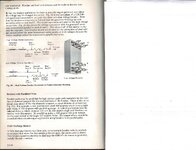I don’t disagree, but I don’t understand the emphasis on current. The current, from a machine damage perspective, is not the concern - a generator can handle ridiculous amounts of current for a short period of time without damage.
The total voltage stress to ground, and the turn-turn voltage stress on multi turn coils, is the major risk to the equipment as it can cause failure to the insulation system. Generally the BIL of a generator is assumed to be 2E+1 by standards (one paper I read recommended 1.25*2E+1)which is much lower than normal oil filled equipment, although I think practically it’s much higher than standards suggest.
The energy dissipation in the attenuation of the wave front in the busswork between the surge arrestor and the generator itself is most beneficial due to a reduction in total wave height (voltage magnitude/stress to the groundwall insulation) and in the slope of the wavefront for multitude coils (turn/turn voltage stress) which would occur due to both resistance and the reactive impedance of the conductors.
As an side some generation experts I interacted with actually recommend removing the surge capacitors on half-coil bar type windings as turn-turn shorts are not a concern (since the turn insulation is effectively twice the groundwall insulation rating).
As a clarification to the original post - on almost all the machines I’ve encountered the surge caps are on the generator side only. The one plant in my company that has caps on both sides was due to me asking for them when we bought a new generator breaker. Since that time I’ve realized they weren’t necessary, and there’s a slight chance they caused some issues with restrike on the breaker disconnect switch, which may have contributed to an auxiliary feed cable failure. Unless the breaker manufacturer needs them to limit the speed of the voltage recovery to reduce the possibility of breaker restrike I would not recommend installing surge caps on the line side of the breaker from my experience.

